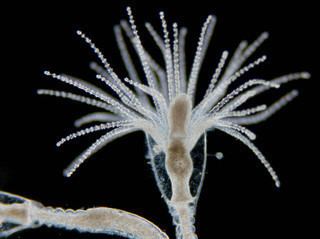Order Leptomedusae Scientific name Obelia Rank Genus | Higher classification Campanulariidae | |
 | ||
Similar | ||
Obelia is a genus in the class Hydrozoa, which consists of mainly marine and some freshwater animal species and have both the polyp and medusa stages in their life cycle. The genus belongs to the phylum Cnidaria, which are all aquatic and mainly marine organisms that are relatively simple in structure.
Contents

Obelia
Habitat
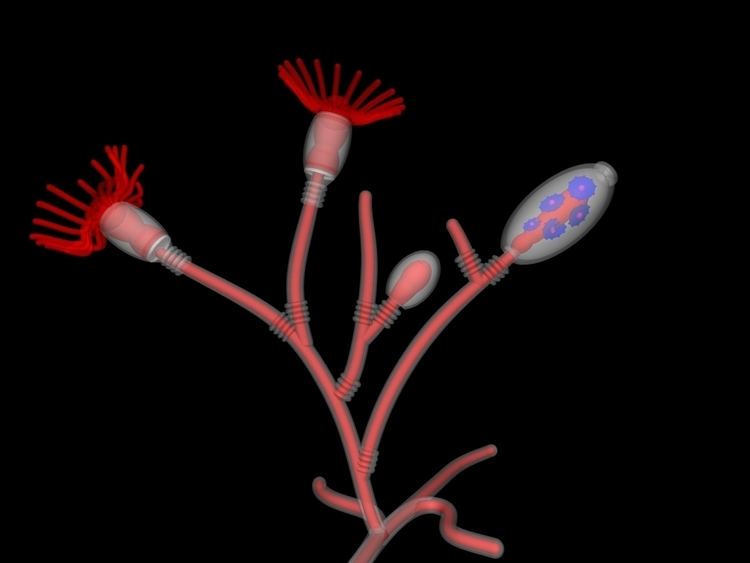
Obelia has a worldwide distribution except the high-arctic and Antarctic seas. The medusa stage of Obelia species are common in coastal and offshore plankton around the world. Obelia are usually found no deeper than 200 metres (660 ft) from the water's surface, growing in intertidal rock pools and at the extreme low water of spring tides.
Life cycle
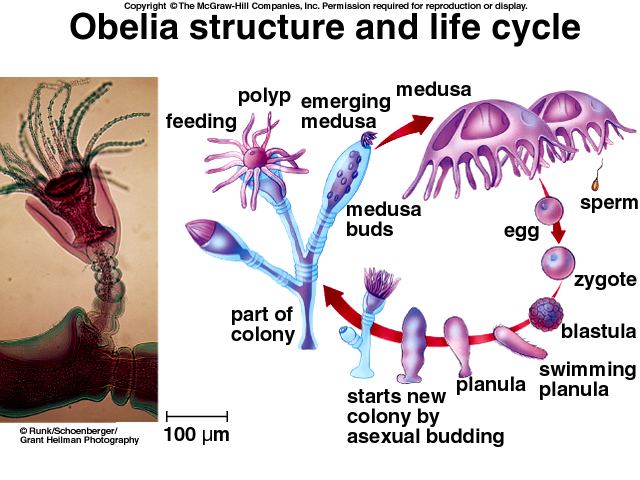
The polyp colony reproduces asexually. During this stage of life, Obelia are confined to substrate surfaces. On this mature colony there are individual hydranths called gastrozooids, which can be found expanded or contracted, to aid in the growth of this organism by feeding; the reproductive polyp gonozooids has medusa buds. Other hydranths are specialized for defense. The main stalky body of the colony is composed of a coenosarc, which is covered by a protective perisarc.

The next generation of the life cycle begins when the medusae are released from these gonozooids, producing free swimming only male medusae velum with gonads, a mouth, and tentacles. The physical appearance of the male and female medusae velum, including their gonads, are indistinguishable, and the sex can only be determined by observing the inside of the gonads, which will either contain sperm or eggs. The medusae reproduce sexually, releasing sperm and eggs that fertilize to form a zygote, which later morphs into a blastula, then a ciliated swimming larva called a planula.
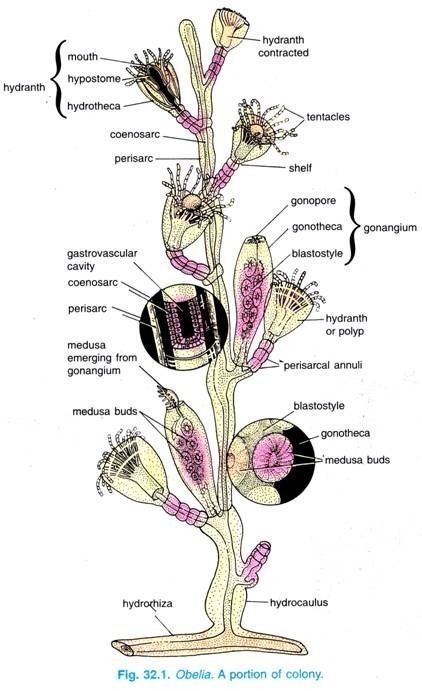
The planulae live free-swimming for a while but eventually attach themselves to some solid surface, where they begin their reproductive phase of life. Once attached to a substrate, a planula quickly develops into one feeding polyp. As the polyp grows, it begins developing branches of other feeding individuals, thus forming a new generation of polyps by asexual budding.
Structure
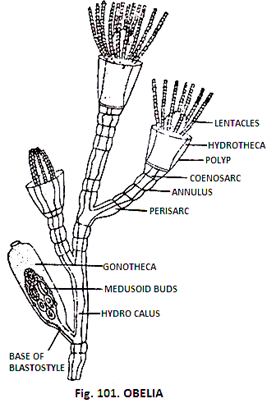
Throughout its life cycle, Obelia exhibits two distinct forms: polyp and medusa. It possesses a diploblastic structure, featuring two genuine tissue layers—an outer epidermis (ectoderm) and an inner gastrodermis (endoderm), separated by a jelly-like substance known as mesoglea. Obelia's nervous system comprises a nerve net without the presence of a brain or ganglia. A gastrovascular cavity is present where the digestion starts and later becomes intracellular. They have incomplete digestive tracts where the food enters, is digested, and expelled through the same opening. During the polyp stage, the mouth is situated at the top of the body, surrounded by tentacles, whereas during the medusa stage, the mouth is situated at the distal end of the main body structure. Four gonads lie in this main body structure, or manubrium. When food is taken in through the mouth, it enters the manubrium. The food is then distributed through a canal system, consisting of four radial canals and an outer ring. Defense and the capture of prey are helped by unique stinging cells called cnidocytes that contain nematocysts, which are triggered by the cnidocil. It has a ridge-like structure on the inner margin, called velum. If the velum is present, it is named as craspedote medusa.
